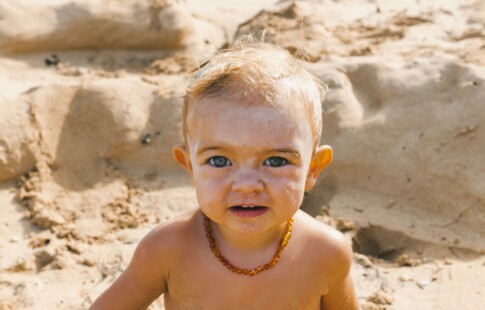
Avoid Oxybenzone Sunscreen If You Want to Prevent Reef Damage
We are reader-supported. When you buy through links on our site, we may earn affiliate commission.
If there’s one thing dermatologists, scientists and parents can all agree on, it’s that wearing sunscreen is important. But not all sunscreens are made equal. In fact, some can be downright harmful — namely, ones that contain oxybenzone. Scientists recently discovered that oxybenzone causes coral reef damage, especially in areas that humans frequent. Thus, a product that people once thought to be solely beneficial is actually damaging one of the most fragile ecosystems in the world.
What Is Oxybenzone?
Sunscreens fall into two categories — chemical and mineral. Chemical sunscreens absorb ultraviolet rays while mineral sunscreens are actually sunblock. They create a thin shield-like layer to deflect the sun’s rays. Oxybenzone is only in chemical sunscreens — and it’s an ingredient with many consequences. It wasn’t until people began complaining of allergic reactions that scientists discovered oxybenzone could negatively affect people as well as coral reefs. Yet, this chemical is still present in the vast majority of sunscreens you might find at the store today.
Impact on Corals
High temperatures as a result of global warming are notorious for bleaching coral. The lesser-known culprit is oxybenzone. As it turns out, this chemical may be just as destructive to coral reefs as climate change. In areas prone to high levels of recreational use, like beaches and snorkeling destinations, sunscreen plays a huge role in coral bleaching. Oxybenzone does this by promoting viral infections in the reefs. Oxybenzone also disrupts reefs hormones and damages their DNA. This process either completely destroys the coral reproductive systems or causes the coral to develop deformed polyps. The most alarming part is how such low concentrations of oxybenzone can dramatically and irreversibly affect coral. Just 62 parts per trillion is enough to bleach these fragile organisms. Each day, much higher levels than that leach off swimmers and beaches, wash off in showers and flow into the ocean.
Impact on Marine Life
As oxybenzone reef damage continues to occur, marine life will inevitably suffer. More than one million aquatic species depend on coral for food and shelter and, if reefs disappear, so will they. For example, researchers have found that butterflyfish, which rely on coral for sustenance, become more lethargic as the coral dies. This process can throw the entire food chain off-kilter. Predators who rely on butterflyfish for food will catch and eat them more quickly, depleting the species and, therein, their own. Due to the effects of oxybenzone on coral and fragile marine ecosystems, a number of tropical regions, including Hawaii, Key West and the Republic of Paula, have banned sunscreens that contain the chemical. However, the U.S. territories’ bans will only become laws beginning in 2021. Plus, they don’t apply to medically-prescribed sunscreens. Thus, they have yet to make any positive impact on coral reefs and marine life, aside from raising awareness.
Impact on Humans
Reefs and marine life aren’t the only things oxybenzone negatively affects. The chemical also poses serious health risks to humans. Two years ago, researchers discovered that exposing mice to levels of oxybenzone similar to those of sunscreen resulted in mammary gland disruption that could lead to cancer. While scientists agree that we need more research, the cell growth in mice mammary glands could be cause for concern. Currently, they are also unsure whether humans experience the same effects. While scientists are unsure whether oxybenzone can cause breast cancer in humans, they know that it can cause low birth weight in baby girls if a mother is exposed during pregnancy. Additionally, the chemical is a penetration enhancer, allowing other chemicals easier access to the bloodstream through the skin. In addition to sunscreen, companies use oxybenzone in at least 567 personal care products, including lip balm and facial moisturizers. It seems this chemical impacts both the oceans and humans more drastically than anyone previously imagined.
What Can You Do About Oxybenzone Reef Damage?
Using products that contain oxybenzone is a choice, and it’s one that humans can decide not to make. Luckily, there are many products you can use to protect yourself from the sun. For instance, mineral-based options don’t contain oxybenzone and rely on zinc oxide or titanium oxide to deflect the sun’s rays. These ingredients don’t cause harm to corals, animals or humans. You might also opt to wear a shirt and hat to the beach or sit under an umbrella. This way, the next time you take a trip to the Bahamas and decide to snorkel with the coral, you’ll know you’re doing your part to help preserve it for others. Plus, you can rest easy knowing that the lotion on your skin isn’t doing any damage to you either.
Share on
Like what you read? Join other Environment.co readers!
Get the latest updates on our planet by subscribing to the Environment.co newsletter!
About the author

Jane Marsh
Starting from an early age, Jane Marsh loved all animals and became a budding environmentalist. Now, Jane works as the Editor-in-Chief of Environment.co where she covers topics related to climate policy, renewable energy, the food industry, and more.





